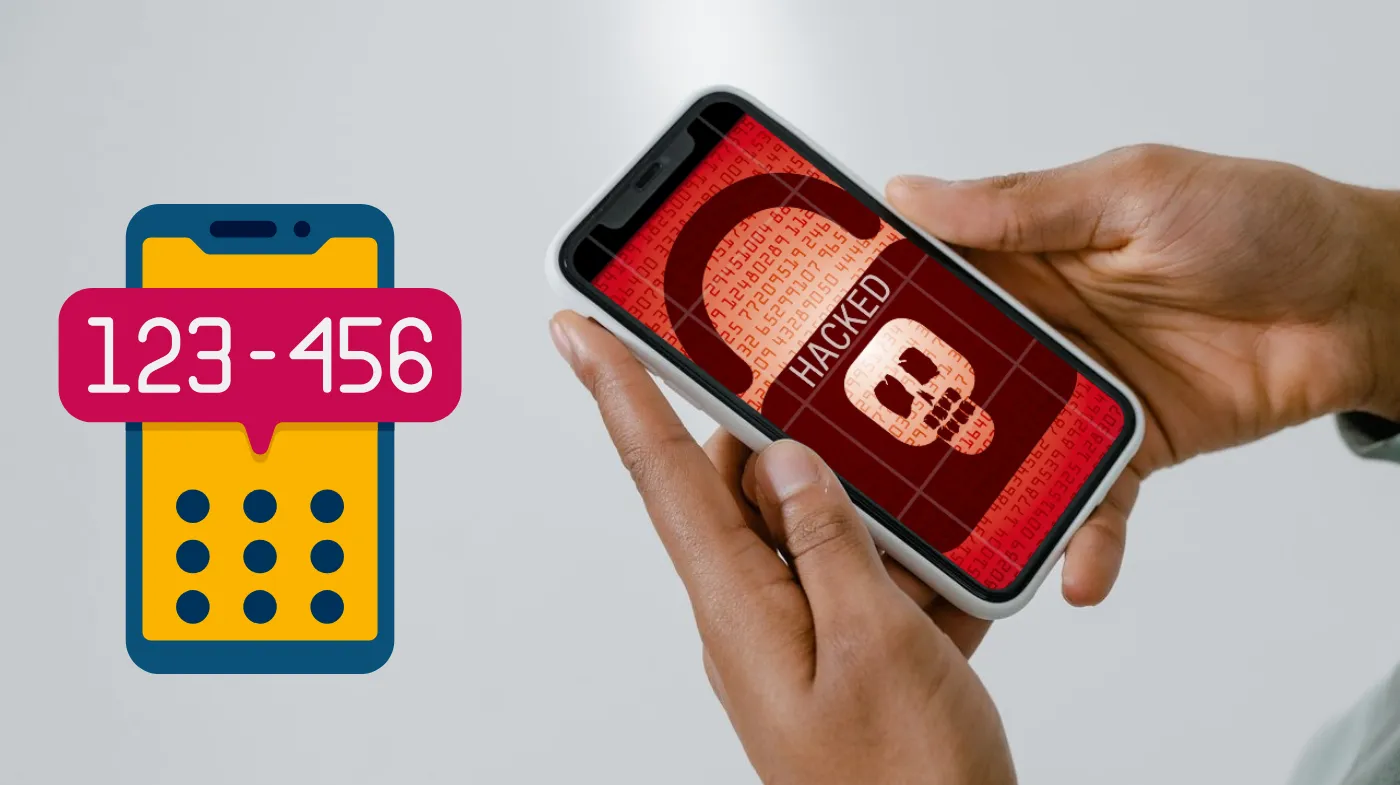
Your phone number is no longer just a way to reach you; it’s become a digital skeleton key that cybercriminals desperately want. While hackers can’t directly infiltrate your device using just your number, they’ve mastered sophisticated techniques that turn this seemingly innocent identifier into their gateway.
This comprehensive guide reveals the hidden dangers lurking behind phone number-based attacks. You’ll discover exactly how criminals exploit your number, learn to recognize the warning signs of compromise, and implement bulletproof defense strategies that protect your accounts, identity, and financial assets.
Whether you’re a privacy-conscious individual or simply want to stay ahead of evolving cyber threats, these actionable insights will transform how you view mobile security. Don’t let your phone number become your weakest link. Discover how to turn it into an impenetrable fortress.
Understanding Phone Number-Based Threats
Your phone number may seem harmless, but in the wrong hands, it can become a powerful tool for cybercriminals.
What Hackers Can Do with Your Phone Number?
Your phone number serves as a digital identifier that connects to various personal accounts and services. While hackers cannot directly access your phone’s internal systems using just your number, they can leverage it for several malicious purposes.
SIM swapping represents one of the most dangerous threats. Attackers contact your mobile carrier, impersonate you, and request a new SIM card. Once successful, they receive all your calls and messages, including two-factor authentication codes.
Phishing attacks become more targeted when criminals have your phone number. They can send convincing text messages or make phone calls pretending to be legitimate organizations, tricking you into revealing sensitive information.
Number spoofing allows hackers to make calls appearing to come from your number, potentially damaging your reputation and targeting your contacts with scams.
Reality of Direct Phone Hacking
Direct phone hacking through a phone number alone is nearly impossible for average criminals. Modern smartphones have robust security systems that prevent remote access without physical device interaction or sophisticated malware installation.
However, your phone number can be used in social engineering attacks where hackers manipulate you or service providers into providing access to your accounts. These attacks exploit human psychology rather than technical vulnerabilities.
Identity theft becomes easier when criminals combine your phone number with other publicly available information. They can piece together enough details to impersonate you effectively.
Common Attack Methods Using Phone Numbers

Phone numbers have quietly become a powerful gateway for cybercriminals. From SIM swapping to phishing, attackers use your digits to bypass security systems, impersonate you, and even trick loved ones or coworkers.
SIM Swapping Attacks
SIM swapping has become increasingly common, targeting high-value individuals and cryptocurrency holders. Attackers research their targets thoroughly, gathering personal information from social media and public records.
The process involves contacting your carrier’s customer service, claiming to be you, and requesting a SIM replacement due to a “lost” or “damaged” phone. Once approved, your number transfers to their device.
Two-factor authentication systems relying on SMS become useless once attackers control your number. They can reset passwords and access your most sensitive accounts, including banking and email.
Recovery can take days or weeks, during which criminals may drain bank accounts, steal cryptocurrency, or access confidential business information.
Phishing and Social Engineering
Targeted phishing attacks become more convincing when criminals know your phone number. They can reference legitimate services you use and create urgency to pressure quick responses.
Voice phishing or “vishing” involves phone calls from attackers pretending to be bank representatives, tech support, or government agencies. They use your number to make the interaction seem more legitimate.
Smishing (SMS phishing) targets mobile users specifically, sending malicious links or requesting sensitive information through text messages that appear to come from trusted sources.
The psychological aspect of these attacks exploits trust and authority, making victims more likely to comply with requests for information or actions.
Number Spoofing and Impersonation
Caller ID spoofing allows criminals to display your number when calling others, making it appear as if you’re making unwanted calls. This can damage relationships and create legal complications.
Business impersonation becomes easier when attackers can make calls appearing to come from your company number, potentially accessing sensitive corporate information or conducting financial fraud.
Emergency exploitation involves criminals spoofing your number to contact family members, claiming you’re in trouble and need immediate financial assistance.
Modern spoofing techniques are sophisticated and difficult to detect, making prevention more challenging than ever.
Protective Measures and Security Strategies

Keeping your phone number and digital identity secure requires more than just strong passwords; it demands layered, proactive defense strategies.
Securing Your Phone Number
Carrier account protection starts with adding security questions, PINs, and passwords to your mobile account. Contact your provider to enable additional authentication requirements for SIM changes.
Port protection services offered by some carriers prevent number transfers without extensive verification. These services add extra layers of security but may cause inconvenience during legitimate transfers.
Regularly monitor your mobile account for unusual activity, such as unauthorized changes, unexpected services, or suspicious logins. Set up alerts for any account modifications, and strengthen your login security by using safe online password generators to create complex, unique passwords that are harder to crack.
Privacy settings on social media should limit the visibility of your phone number. Avoid posting your number publicly or in easily accessible locations.
Implementing Strong Authentication
Two-factor authentication should use authenticator apps rather than SMS whenever possible. Apps like Google Authenticator or Authy provide better security than text-based codes.
A reliable random password generator creates unique, complex passwords for each account, making it harder for criminals to gain access even if they obtain your phone number. These tools generate cryptographically secure passwords that are virtually impossible to guess.
Password management systems store and organize your login credentials securely. Using a strongest password checker helps ensure your passwords meet security requirements and resist common attack methods.
Backup authentication methods provide alternative ways to access your accounts if your primary method becomes compromised. Set up multiple recovery options for critical accounts.
Device Security Best Practices
Screen locks with PINs, passwords, or biometric authentication prevent unauthorized access if your device is lost or stolen. Use complex codes that aren’t easily guessable.
Software updates patch security vulnerabilities that criminals might exploit. Enable automatic updates or check regularly for new versions of your operating system and apps.
App permissions should be reviewed regularly. Remove unnecessary permissions from apps that don’t require them for functionality. Many apps request excessive access to your data and contacts.
Secure network connections protect your data during transmission. Use VPNs on public Wi-Fi and avoid connecting to unsecured networks where possible.
Frequently Asked Questions
How Do I Know if My Phone Number Has Been Compromised?
Warning signs include unexpected loss of cellular service, receiving notifications about password resets you didn’t request, unfamiliar activity on your accounts, or friends reporting spam calls from your number.
What Should I Do if I Think My Number Is Being Used Maliciously?
Immediate actions include contacting your carrier to report suspicious activity, updating your login credentials using a trusted guide to generating passwords, enabling extra security features like two-factor authentication, and closely monitoring your financial accounts for any unauthorized transactions.
Staying Safe in the Digital Age
While your phone number alone cannot directly hack your device, it serves as a valuable tool for cybercriminals seeking to compromise your digital life. The key to protection lies in understanding the various attack methods and implementing comprehensive security measures.
Strong authentication practices, including the use of secure password generation tools and multi-factor authentication, create robust barriers against unauthorized access. Regular monitoring of your accounts and maintaining awareness of current threats helps you stay ahead of potential attackers.
Remember that digital security is an ongoing process, not a one-time setup. Stay informed about new threats, update your security practices regularly, and trust your instincts when something seems suspicious.
